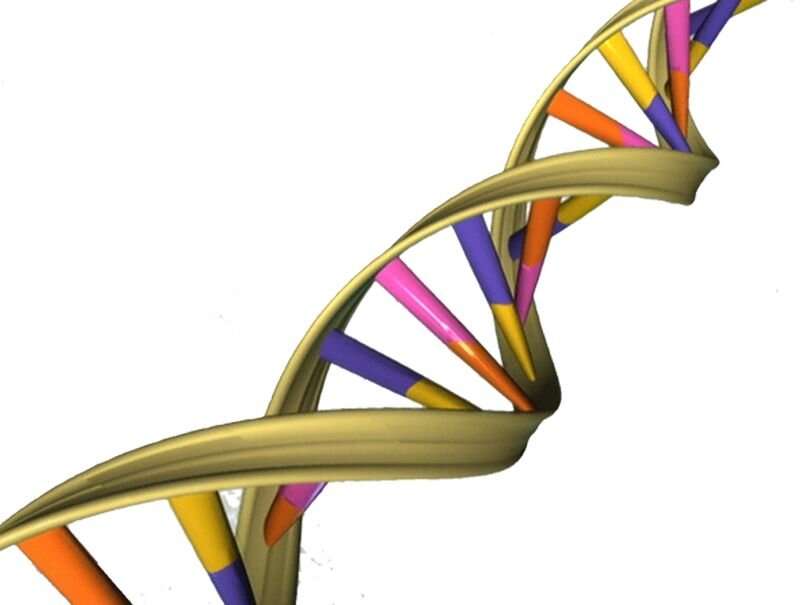New diagnostics technique detects 'undetectable' genetic defects

Detecting hidden genetic defects by applying an existing method to an existing datasets. Researchers at Radboud university medical center have succeeded: they showed that the 'Expansion Hunter' method can detect errors in the DNA that lead to repeat expansion diseases, such as the movement disorder ataxia. This result provides guidance to fellow researchers worldwide on how to use this method to diagnose patients with genetic disorders.
With current diagnostic technology for genetic disorders, it is possible to map all 20,000 genes in our DNA at once. Doctors are increasingly opting for this so-called exome technique: it is widely applicable and increasingly provides molecular diagnoses. The exome technique is particularly suitable for finding simple changes in DNA.
In a publication in Genetics in Medicine, researchers from the Radboudumc have now shown that the technique can also be used to find a much more difficult type of change in the DNA: so-called repeat expansions. This is a type of mutation in which the same number of, usually three, building blocks of DNA (nucleotides) in the genome are repeated many times. Examples of disorders that arise from repeat expansions are fragile X syndrome and Huntington's disease. Erik-Jan Kamsteeg, laboratory specialist at the Clinical Genetics Department: "Sometimes we knew there had to be an abnormality in the DNA, but it did not show up in the exome test. Then the dataset was ignored, discarded as it were. But we knew there were gaps; that we weren't seeing everything."
At this, the researchers investigated the possibility of applying repeat expansion analysis to already available data from 2,700 patients with movement disorders. Reading out their genes had previously revealed no cause, even though there was a very strong suspicion of a hereditary defect in this group of patients. With this new analysis the cause of the defect was found in seven patients, without having to carry out additional laboratory experiments.
Associate Professor of Genome Bioinformatics Christian Gilissen comments: "These numbers may seem small, but the impact on diagnostics is of great value. If every genetic center starts doing this, and we have now shown that this can be done easily without additional experiments, you can obtain a diagnosis for a lot of patients for whom the cause of their condition has remained unknown. We know that a diagnosis in itself is very important for the patient, because it provides certainty and an explanation, can give a prognosis of the course of the disease, but also the possibility of contact with patients with the same diagnosis." In addition, finding the right molecular diagnosis also helps to determine the risk for the disorder in children and other relatives of patients.
Ataxia
In this case, the researchers looked in particular at the movement disorder ataxia, because repeat expansions are a known cause of these disorders. Ataxia is primarily caused by disease or damage to the cerebellum. The main function of the cerebellum is to ensure perfect adjustment in the cooperation between muscles, so that a smooth movement occurs. When the cerebellum is affected, people develop problems with their motor skills: walking, articulating and swallowing become more difficult, and they may experience trembling hands or double vision. The seven new molecular diagnoses now found for ataxia consist of six relatively known causes, which despite years of searching had not been detected before. The researchers also found one exotic dominant ataxia (type 12) that to date has only been described three times worldwide.
More information: Bart P. G. H. van der Sanden et al, Systematic analysis of short tandem repeats in 38,095 exomes provides an additional diagnostic yield, Genetics in Medicine (2021). DOI: 10.1038/s41436-021-01174-1





















